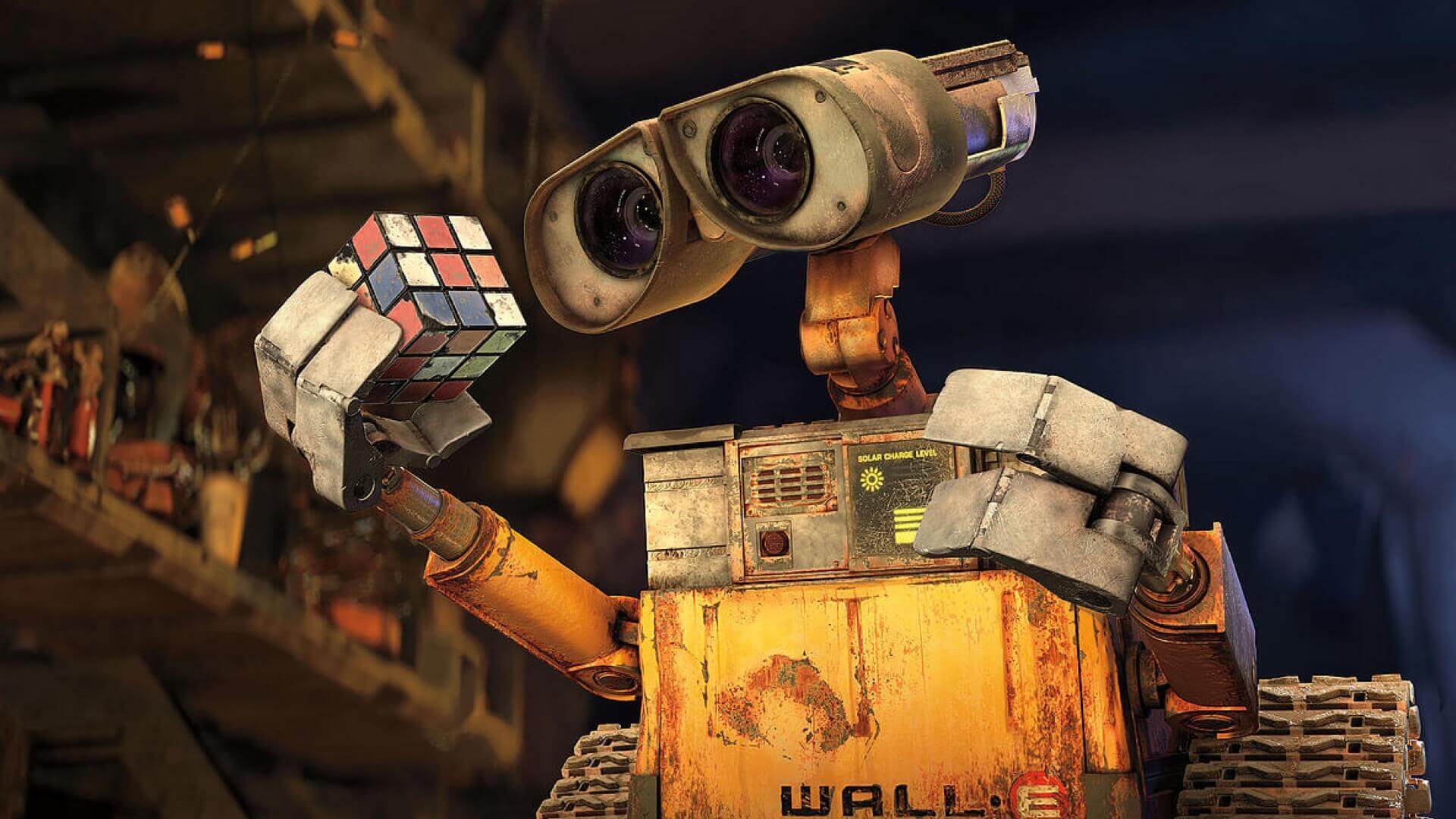When you hear Pixar, you probably think about 3D Animation. Well, honestly, I bet you think about a little bouncing lamp squishing a letter, but hey, same thing really. While Pixar has been setting the standards of 3D Animation, it’s nothing compared to the deep, meaningful story in each and every Pixar film. The Pixar storytelling formula is real and we’re going to tell you all about it.
In her video essay, Kristian Williams explores the question: “Why must you tell this story?” Spinning off from her video, we’ll examine what makes the Pixar formula so effective in five filmmaking tips.
Themes In Pixar Storytelling
1. Embrace death and adult themes
Unlike the Disney films based on preexisting classic fairy tales, Pixar storytelling centers around modern, original stories with deep and complex themes.
While these vary greatly from film to film, at their core, the stories focus on concepts that relate to human socio-emotional development.
Understanding death, pursuing a passion despite all odds, dealing with jealousy, moving away, building friendships, trying your own strength – these life lessons are applicable not only to children, but to all of us, as we grow and change.
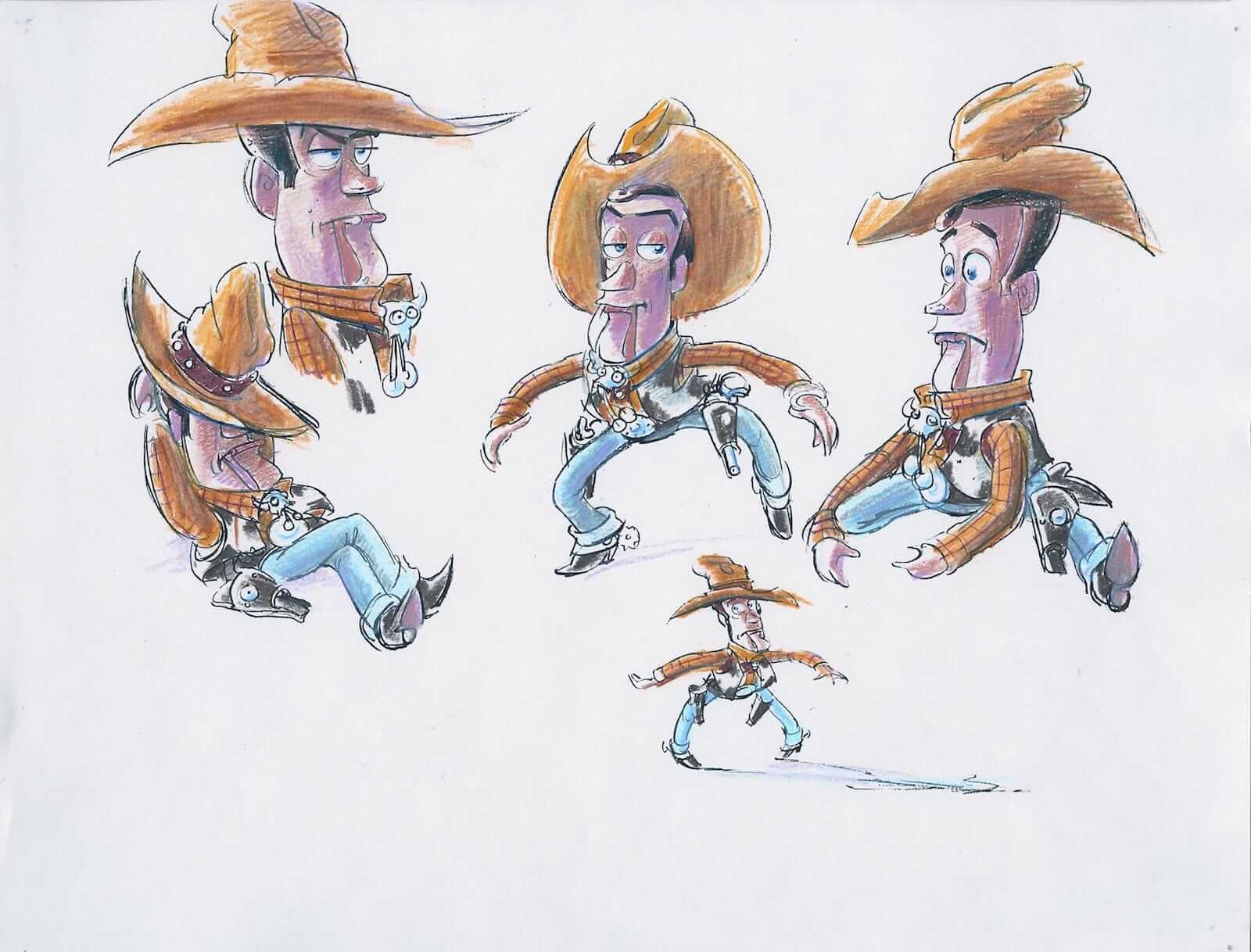
These early Pixar drawings would become the 3D-render of Woody today.
Toy Story, the original Pixar feature, is as good an example of this as any.
The jealousy and resentment Woody feels towards Buzz is not specific to toys — these emotions are a part of the everyday human existence. Woody is imperfect and he makes many mistakes out of selfishness, just as real people do. Meanwhile, Buzz harbors delusions of grandeur, and an inability to face reality.
Through all of their imperfections and struggles, however, Woody and Buzz are able to work together towards what is important — returning to the boy and family they love.
Subject Matter
2. Work in the grey area
In classic Disney films, characters are either all good or all evil. Most Pixar characters live someplace in between.
Pixar storytellers understand that an antagonist is not necessarily a villain, and that a villain is not necessarily bad to the core.
Take a look at Syndrome from the movie, The Incredibles.
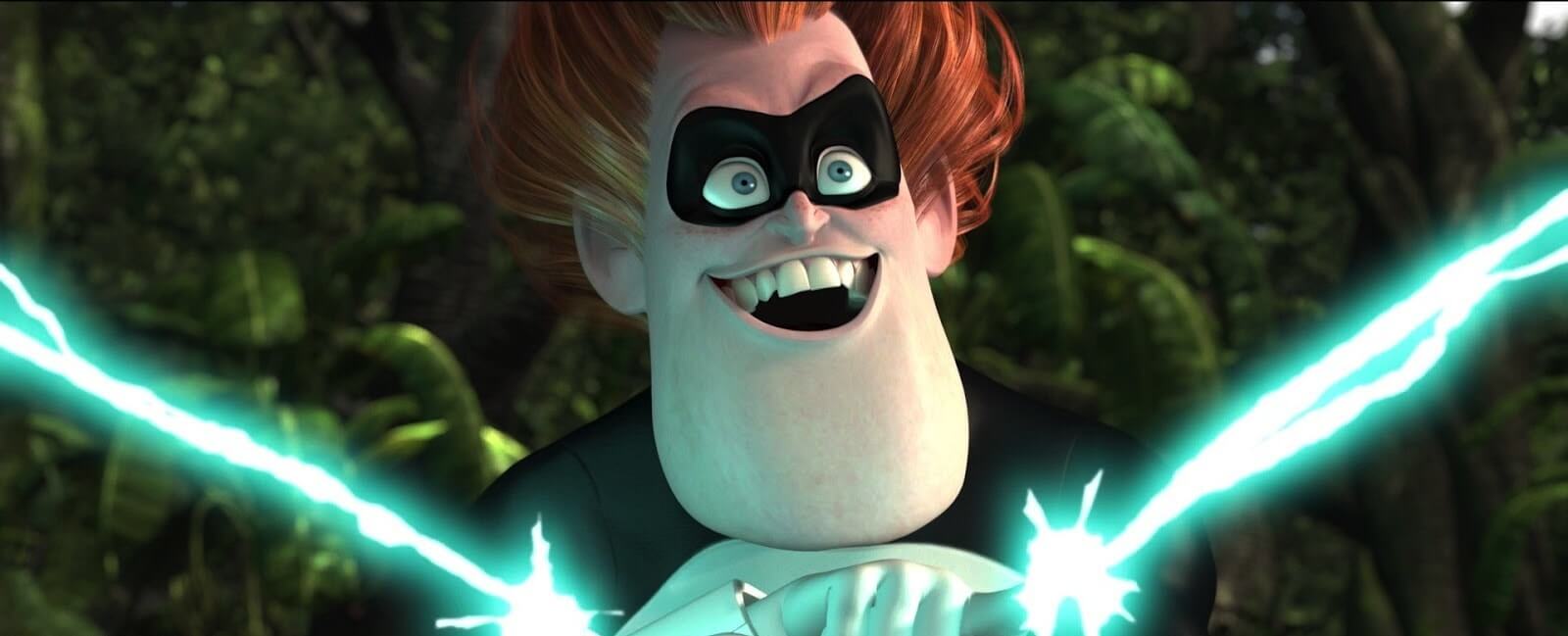
All Syndrome needs is a therapist.
Syndrome’s rise to power and desire to kill all supers, both stem from an incident where Mr. Incredible mistreated him as a child. Does that backstory make his genocide okay?
No, definitely not what I’m saying. But do we understand him? Instead of relying on the repetitive tropes of classic pantomime characters, as many children’s films do, Pixar builds real, complex people into each of their movies.
In 2012, Pixar storyboard artist, Emma Coats tweeted out 22 rules of storytelling. While we shouldn’t think of these as a Pixar storytelling formula, per se, the Pixar story rules serve as a basis to see if your project’s characters hold up.
Pixar Characters
3. Give everybody and anyone an arc
In the world of theater, you’re bound to hear that there are no small parts, just small actors. This couldn’t be truer in the world of Pixar storytelling when some characters are tiny as a ant.
Beyond that, Pixar gives their characters, all of their characters, arcs. This allows minor characters who could only exist to push along the protagonist’s stories actually stakes in the plot.
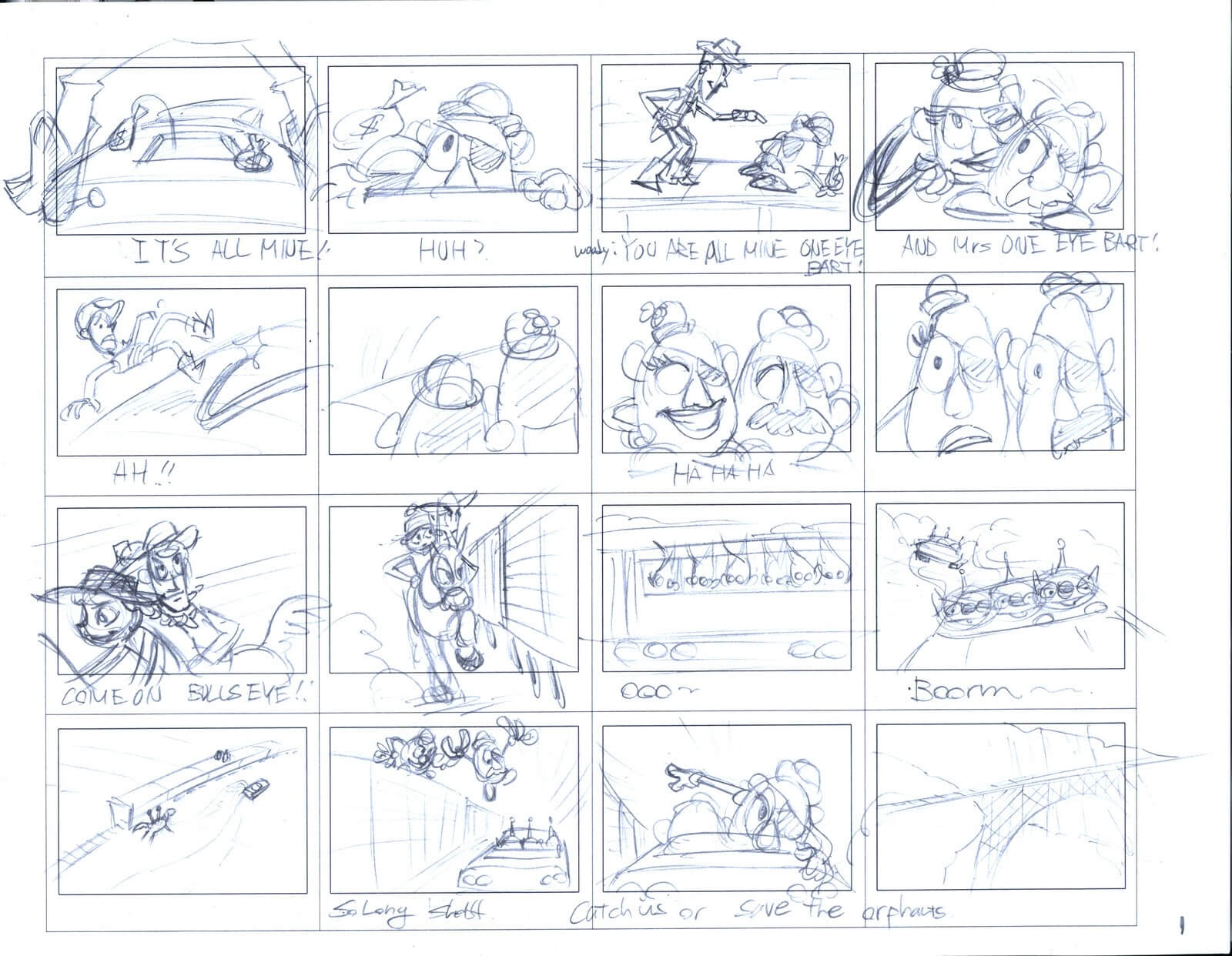
This Pixar storyboard depicts the opening sequences from Toy Story 3
When you’re creating your storyboards, examine the minor characters you’ve drawn into your scenes. Ask yourself what their personal stories are and if they can be included without distracting from major arcs.
Storytelling Limitations
4. Know your medium
Every Pixar movie could not be shot in live action. When toys come to life, fish lose their memories, and monsters, well, exist, animation is the only way to go.
Even Pixar’s more human-centric stories, like Up and Brave feature out-of-this-world set pieces that would be difficult to achieve with live action.
By understanding your medium, you understand what the realm of possibility is. Pixar storytelling is self-aware that what you see you could only see through a computer’s aid.
If you’re making a half animated, half live action project, push your animation as far as it can go. If you’re working with humans, instead of toys that can talk, capture the expressions that a computer could never make (with ten years).
WATCH: THE PIXAR STORY
This 2007 documentary details the birth of computer animation that would become Pixar Studios. Touching on some of the big Pixar story rules, it’s always inspiring to hear legends like John Lasseter give filmmaking tips.
Pixar Storytelling
5. Explain emotion without 'lessons'
Pixar has created a great story, perfectly suited to the medium of animation, and then built complex characters to live it.
But why?
This level of care and depth undoubtedly promotes emotional responses from an audience, which, of course, is exactly what Pixar was after. However, these films take it one step further – not only do they elicit real emotion from their audiences, they also explain those emotions without a teaching lesson.
It is organic and natural, and in no way talks down to the audience. The stories themselves teach compassion and emotional understanding.
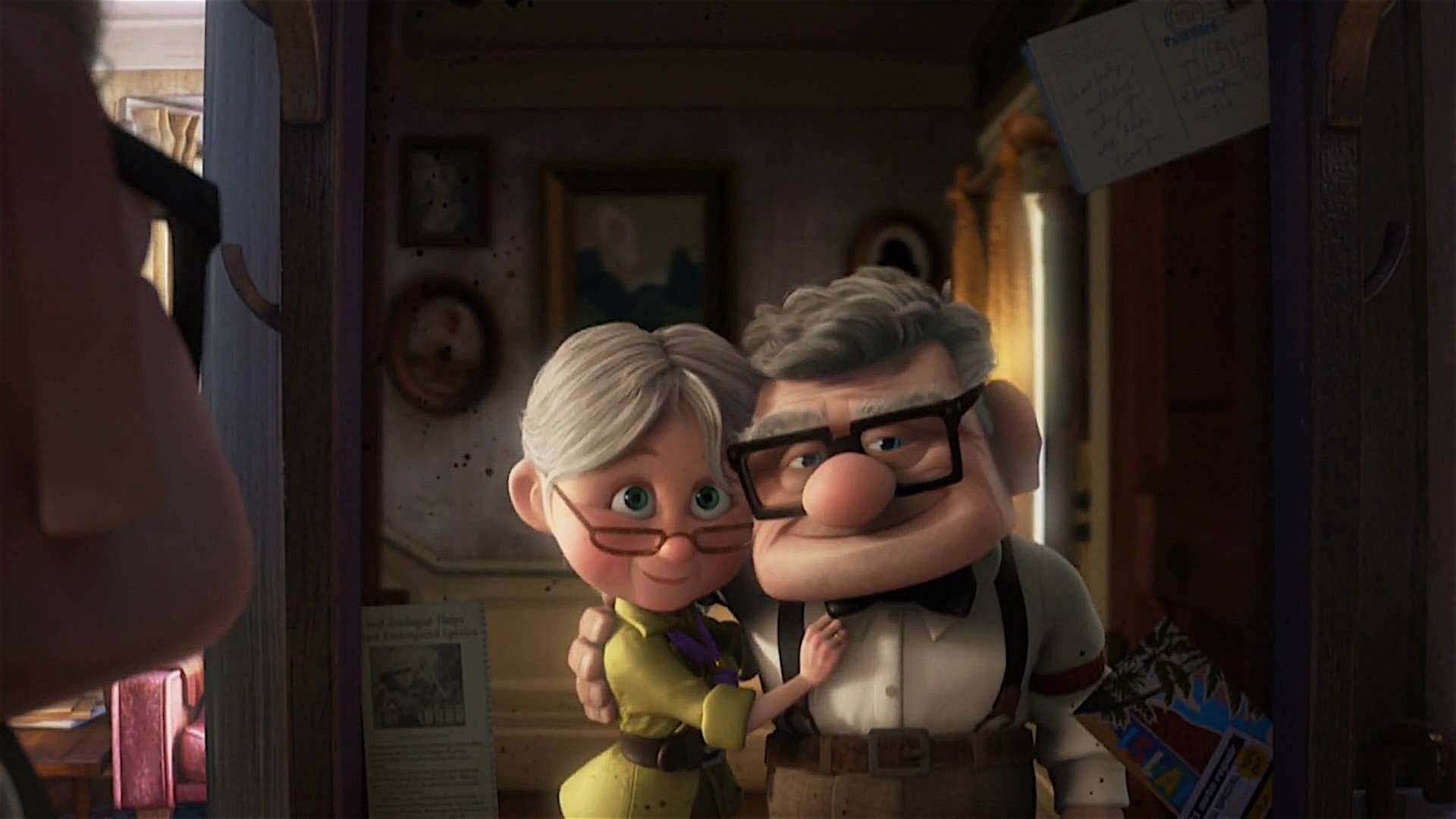
Up
Interested to learn more about Pixar storytelling? Khan Academy is currently offering a free YouTube course detailing how Pixar breaks story. A masterclass in the art of storytelling, be sure to check it out!
UP NEXT
Pixar short films
With the Pixar storytelling formula is mind, let's put it to the test. We've collected 24 Pixar short films that bring the same level of storytelling mastery that we've seen in their features. You can see for yourself that Pixar's evolution has always been technical — they've had the storytelling part down from Day One.
Up Next: 24 Pixar shorts →
Easily create script breakdown sheets online.
Import scripts. Tag elements like props, wardrobe, and cast. Create breakdown summaries and DOOD reports in a snap.
